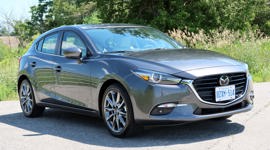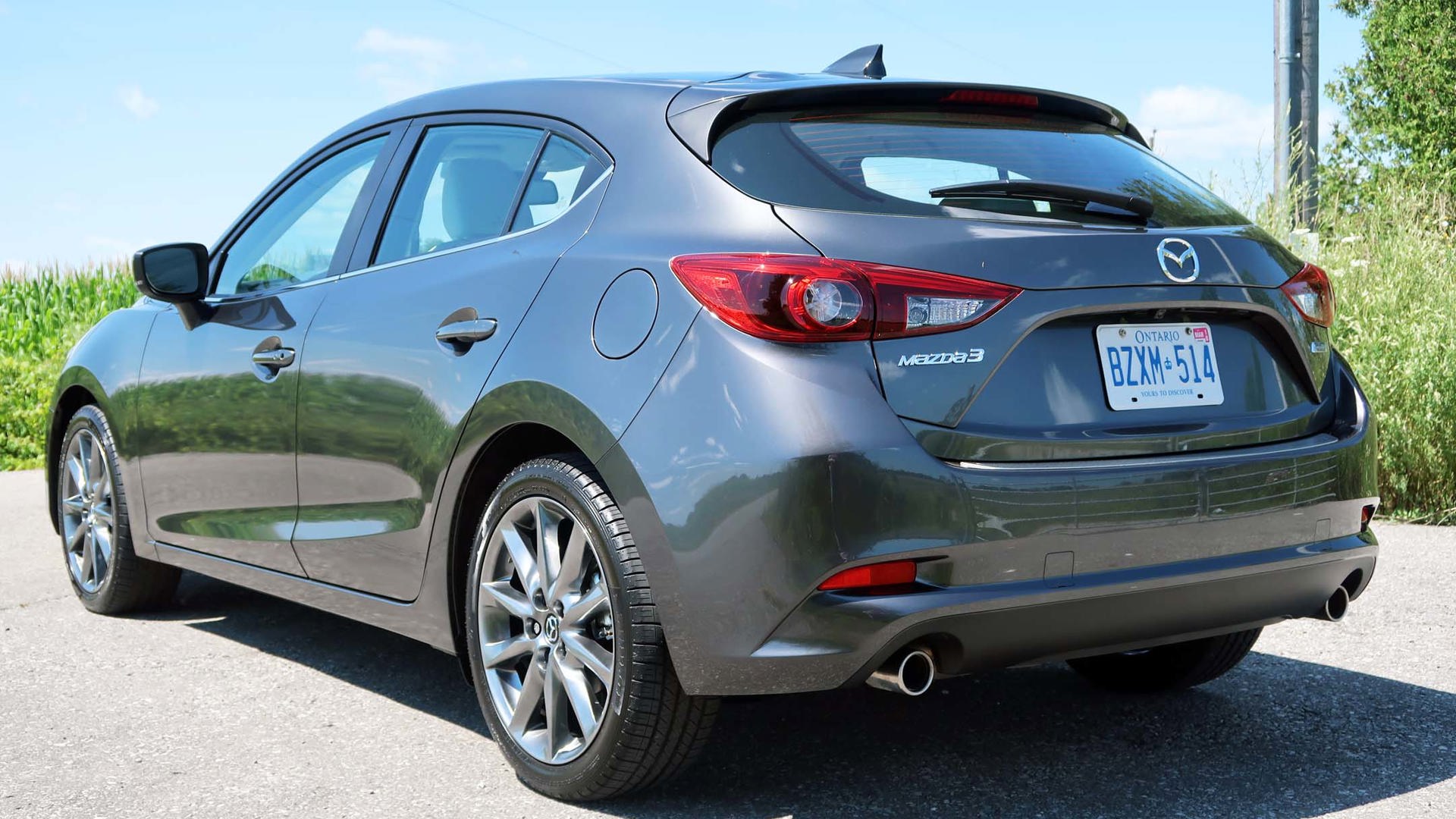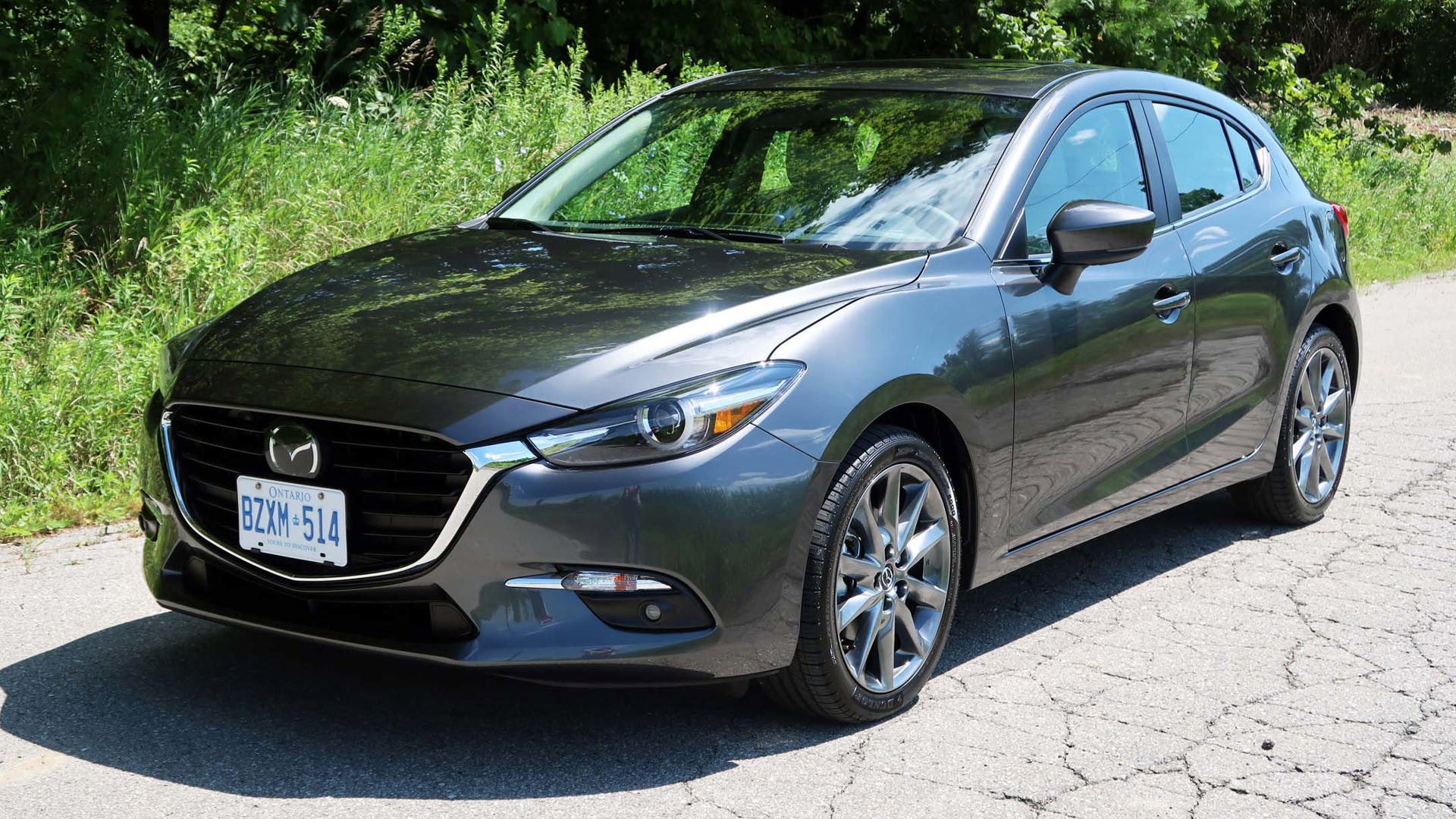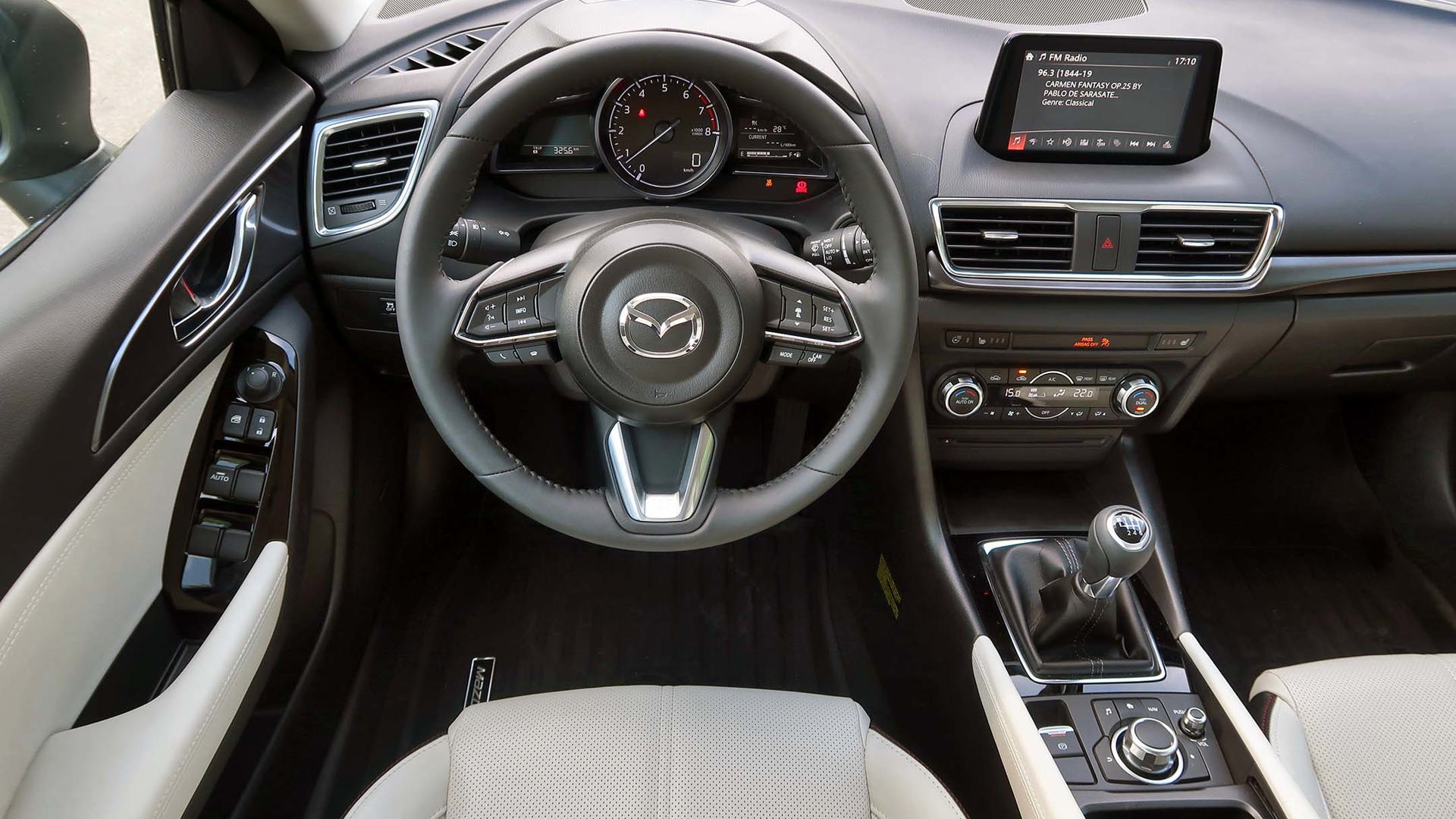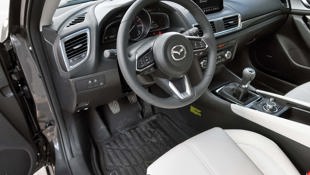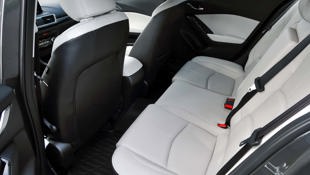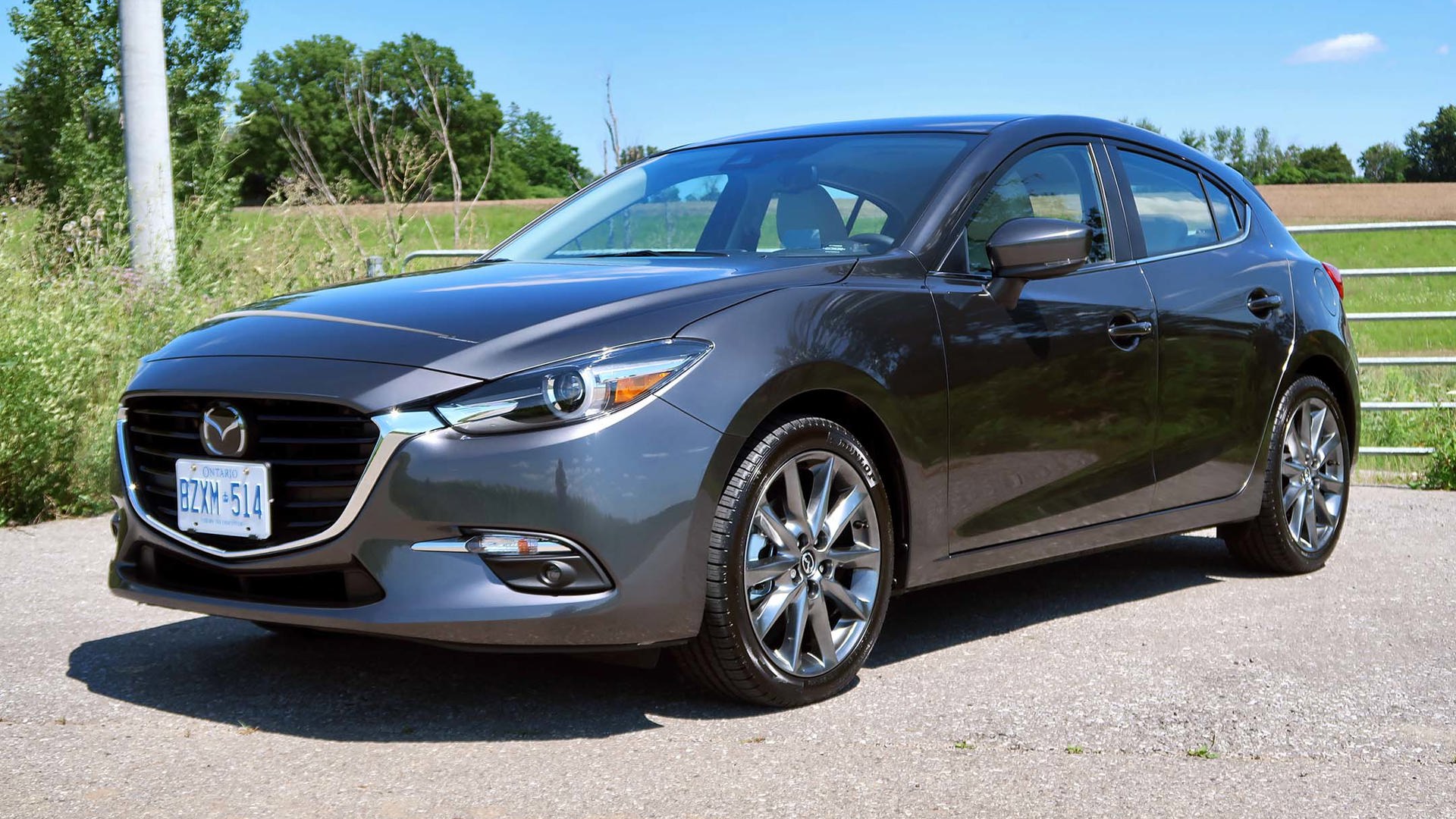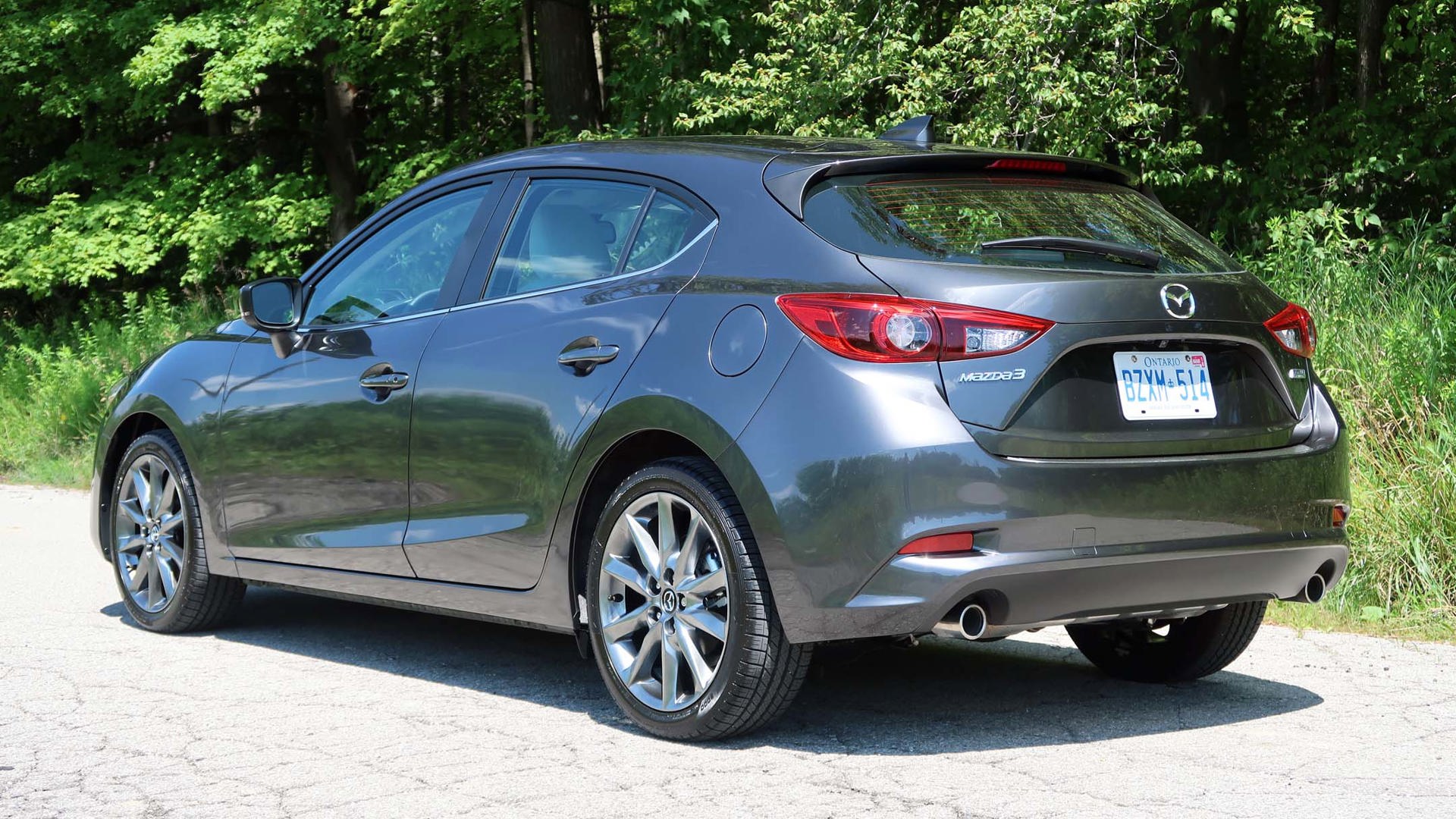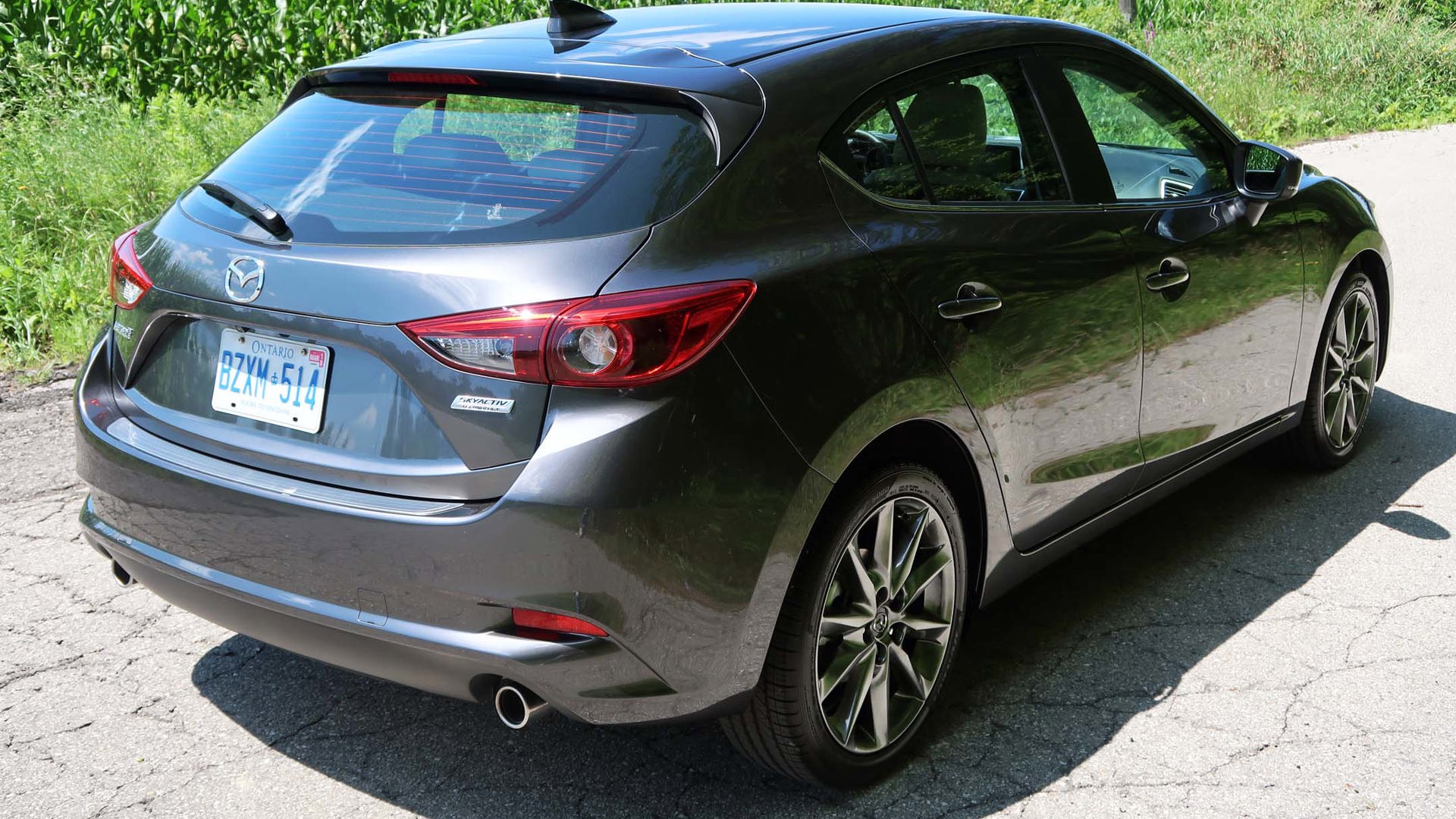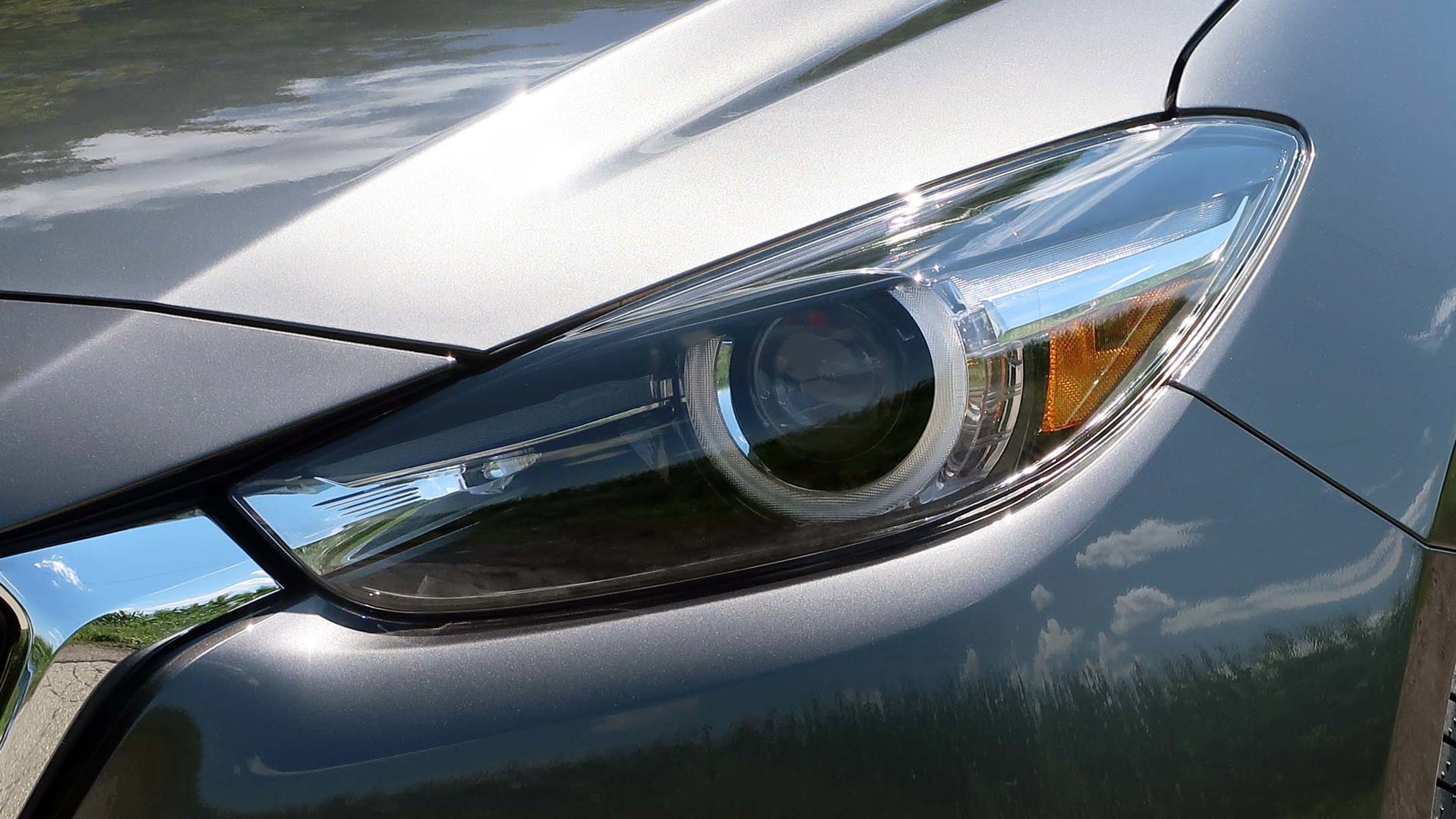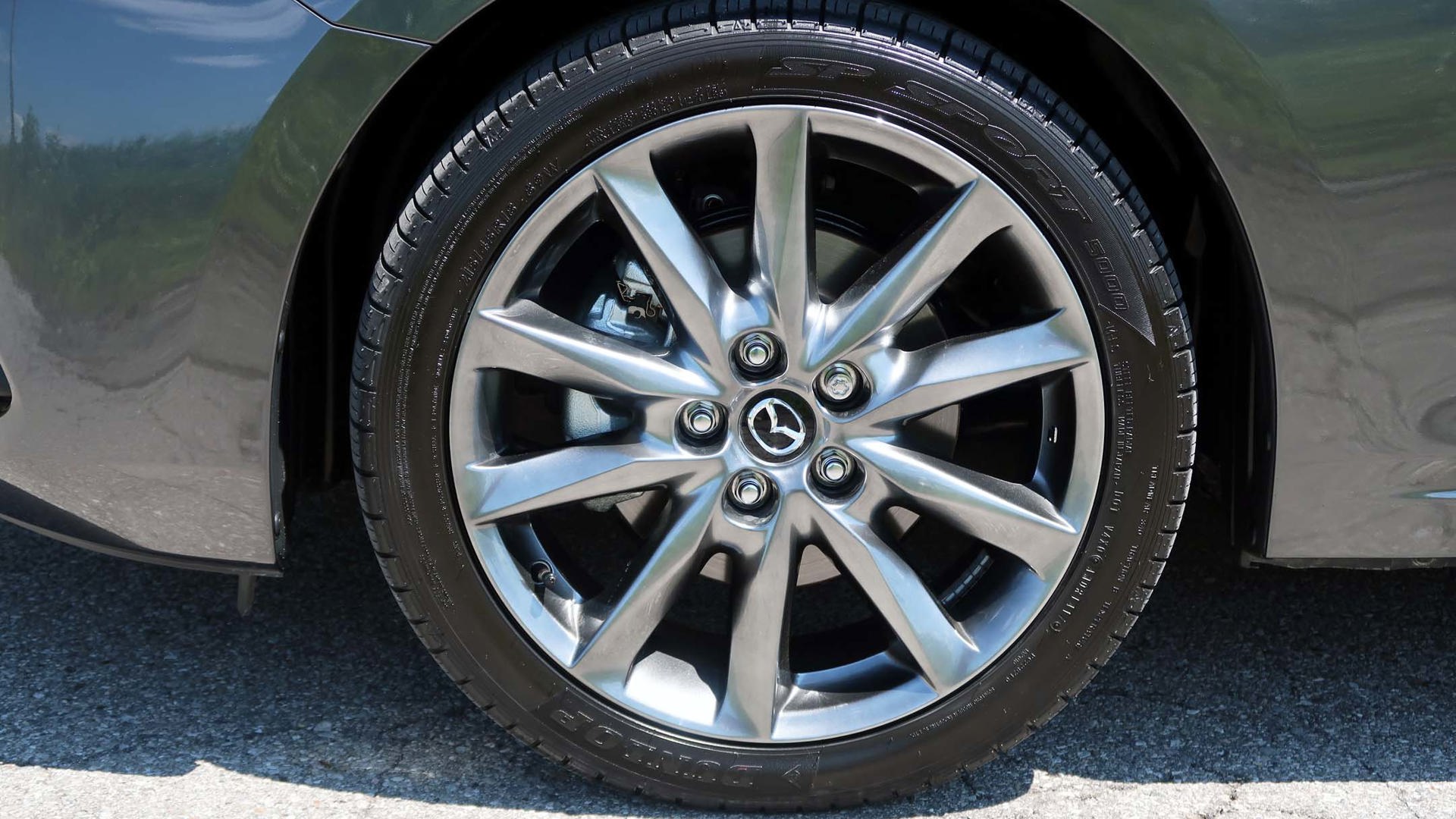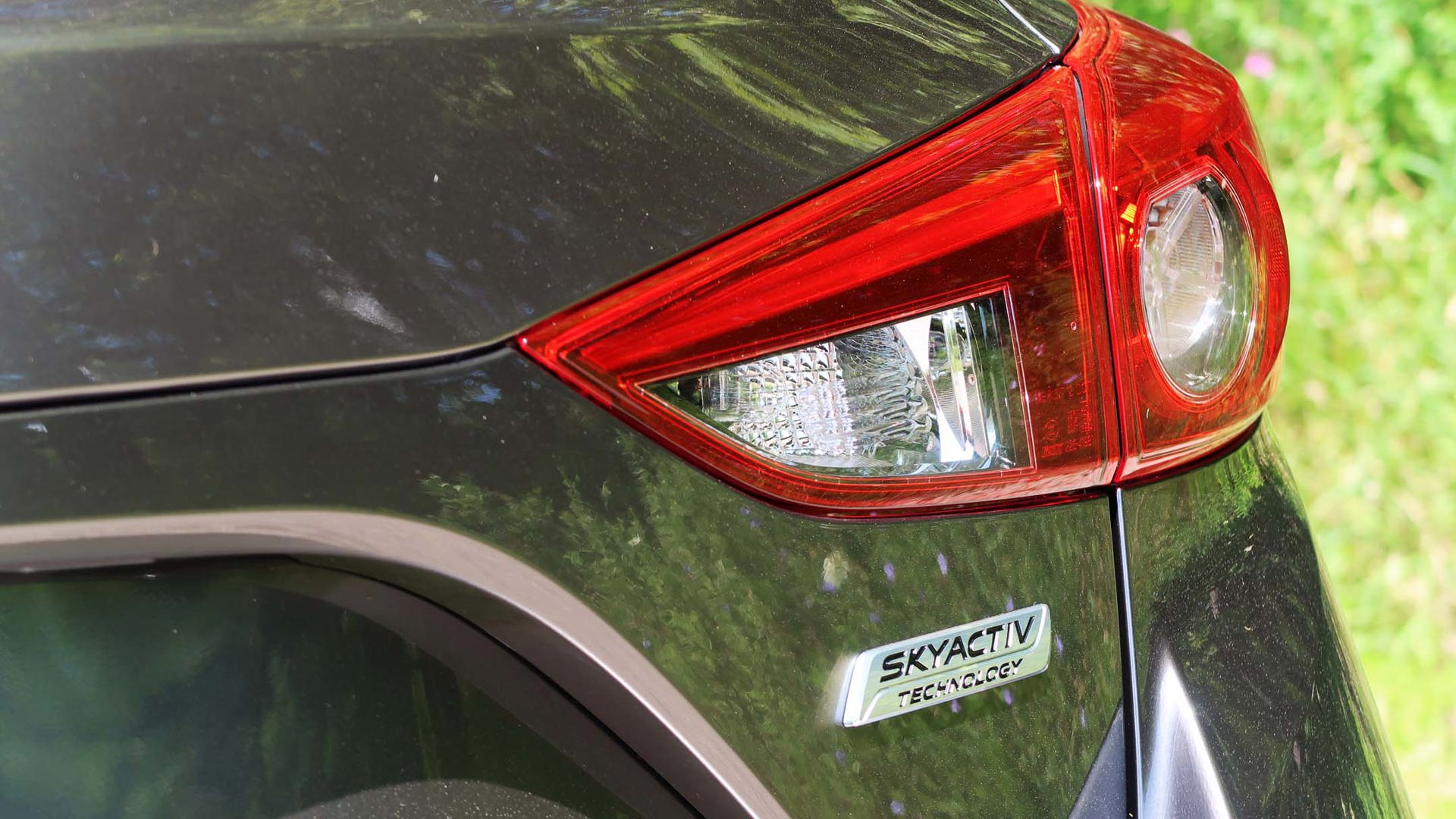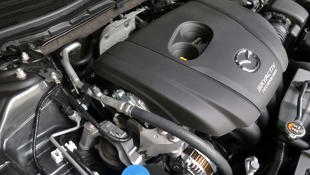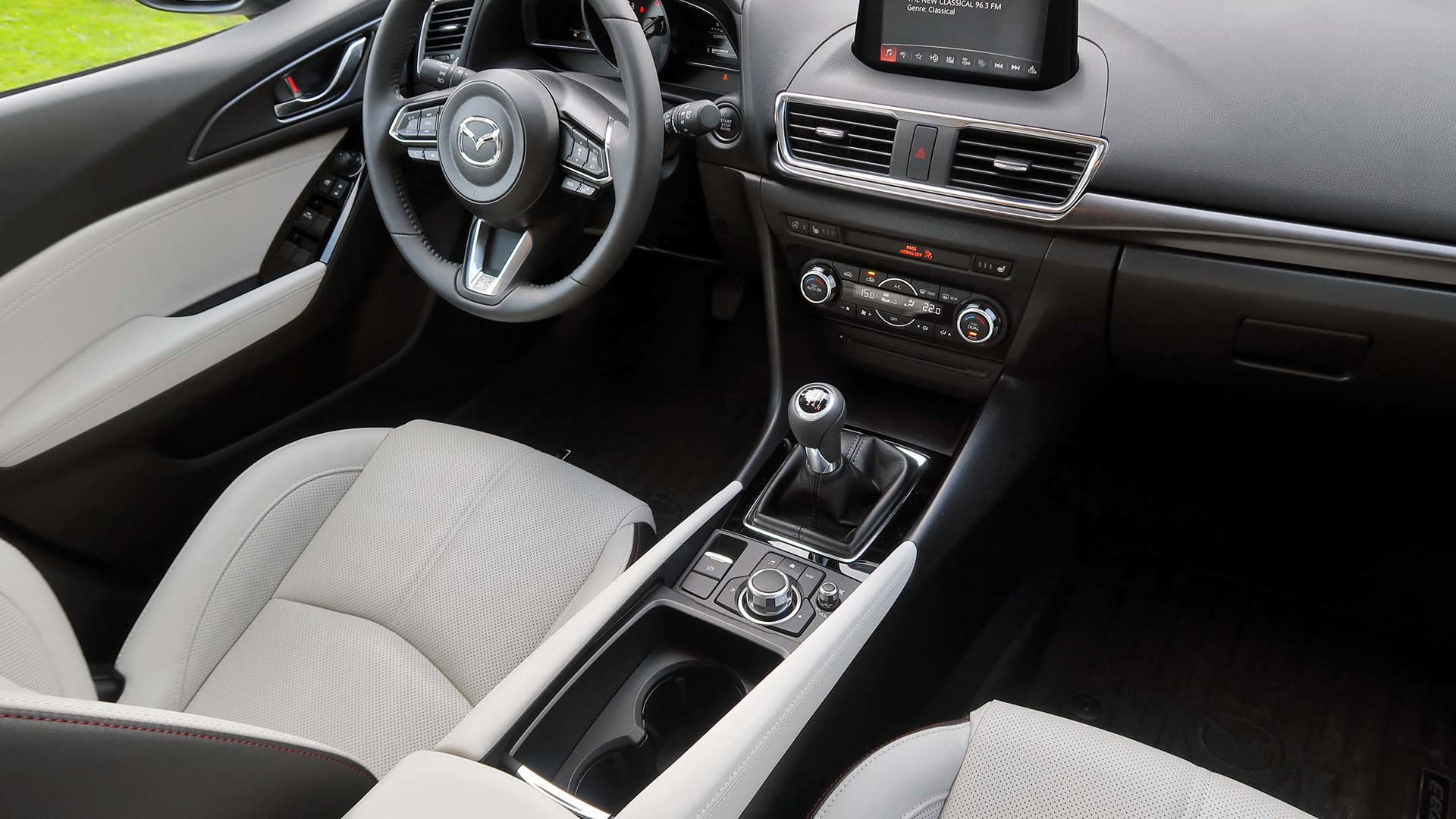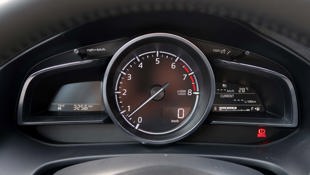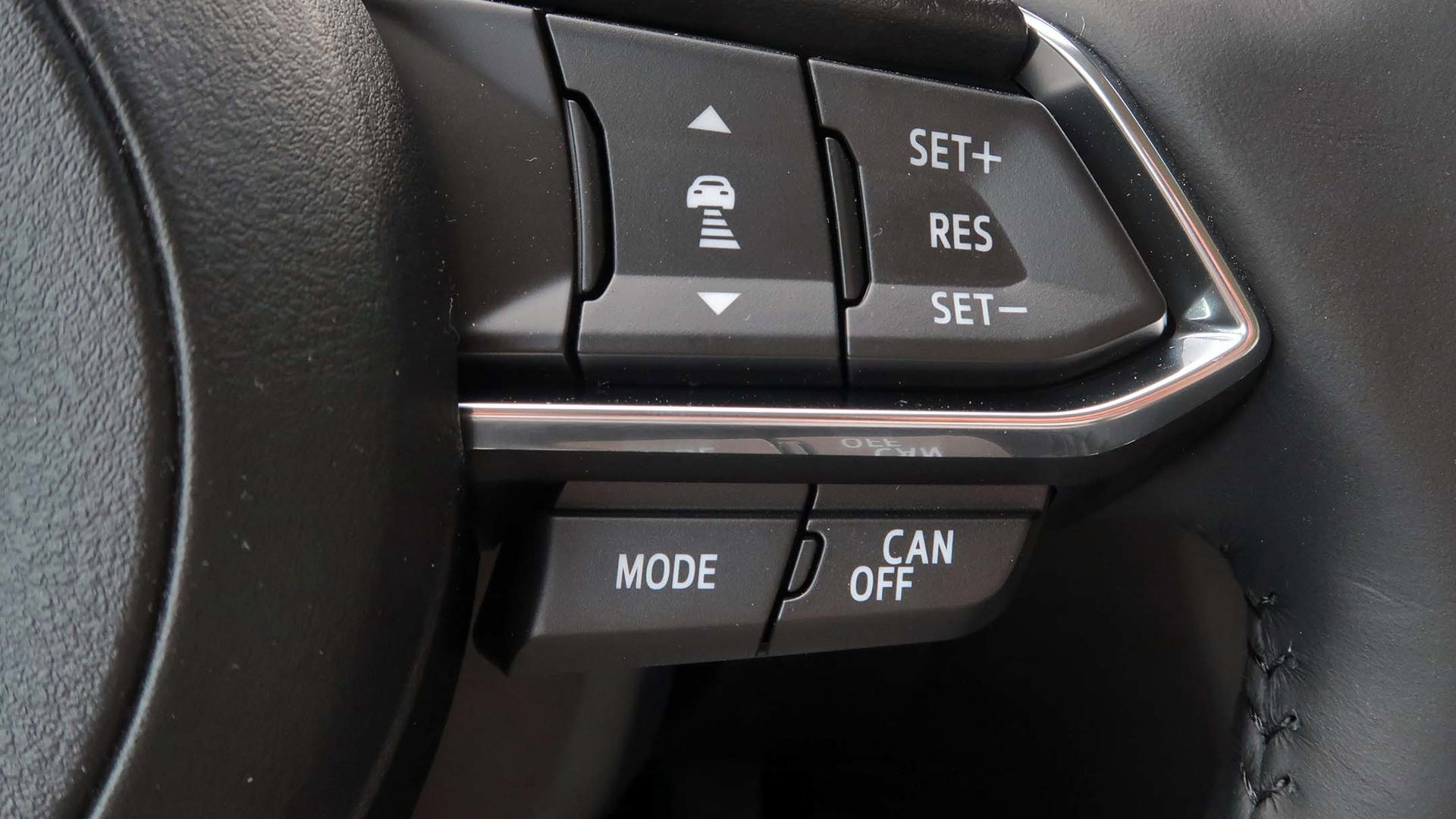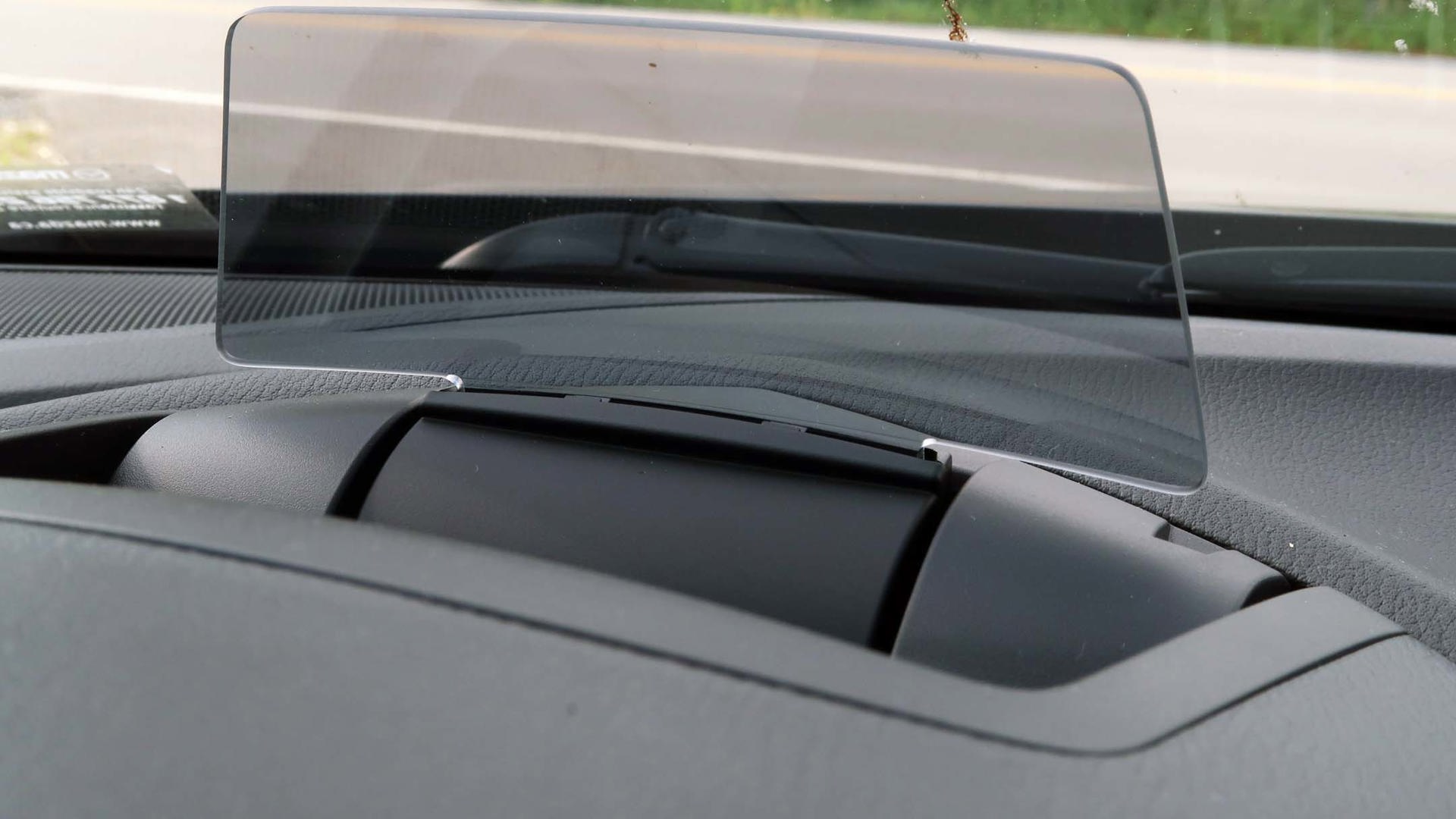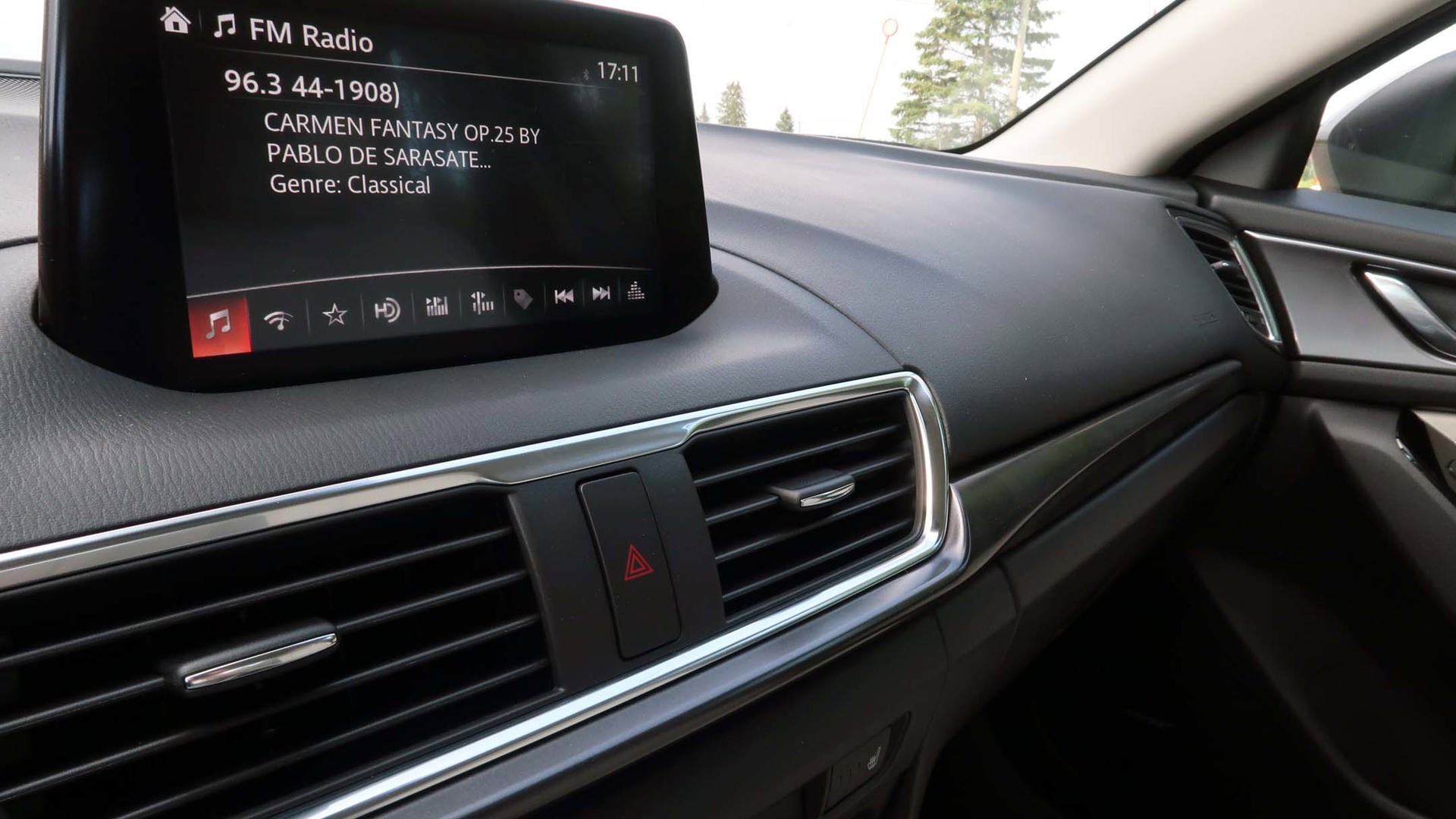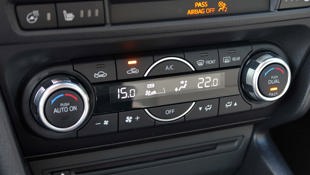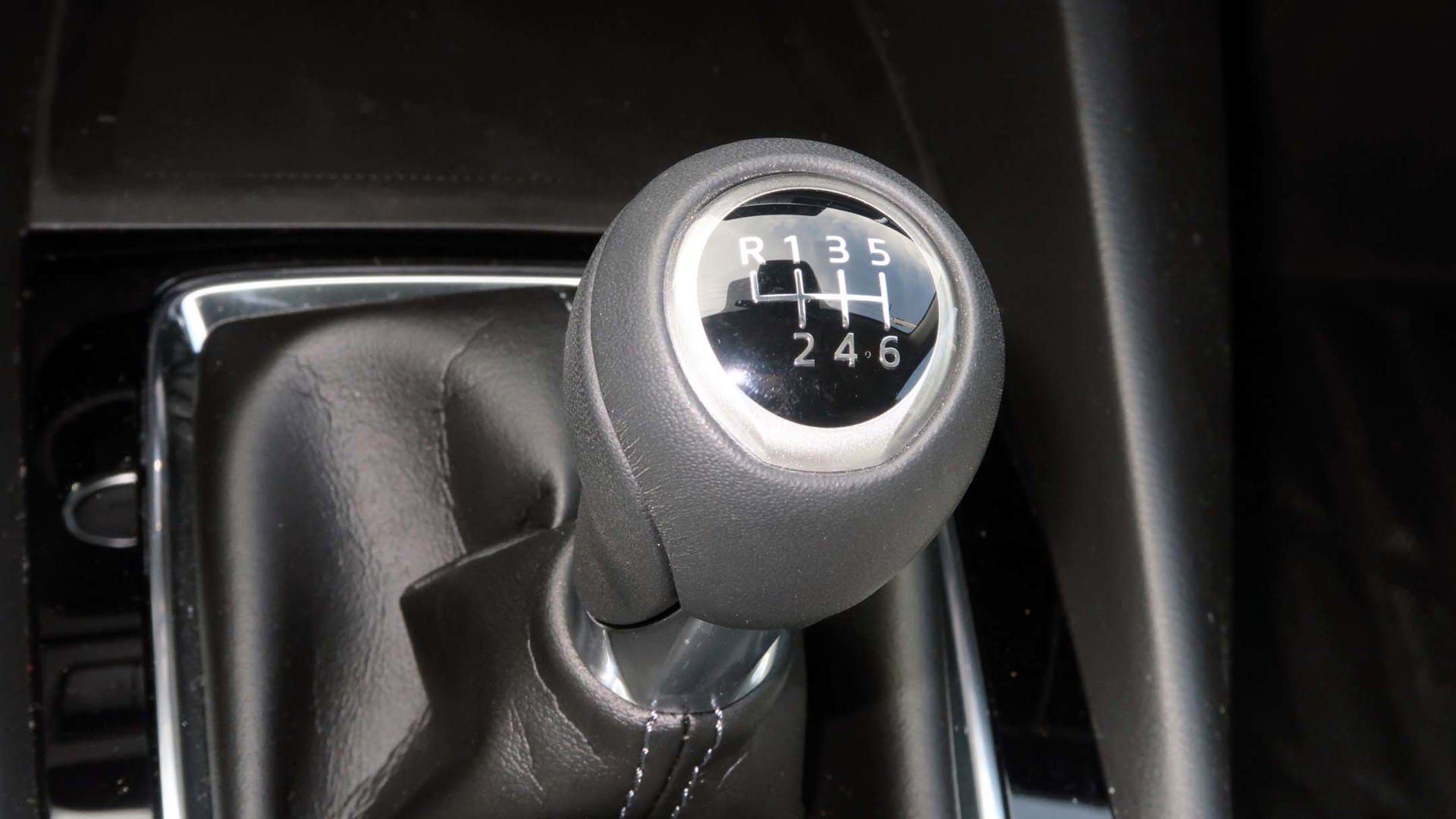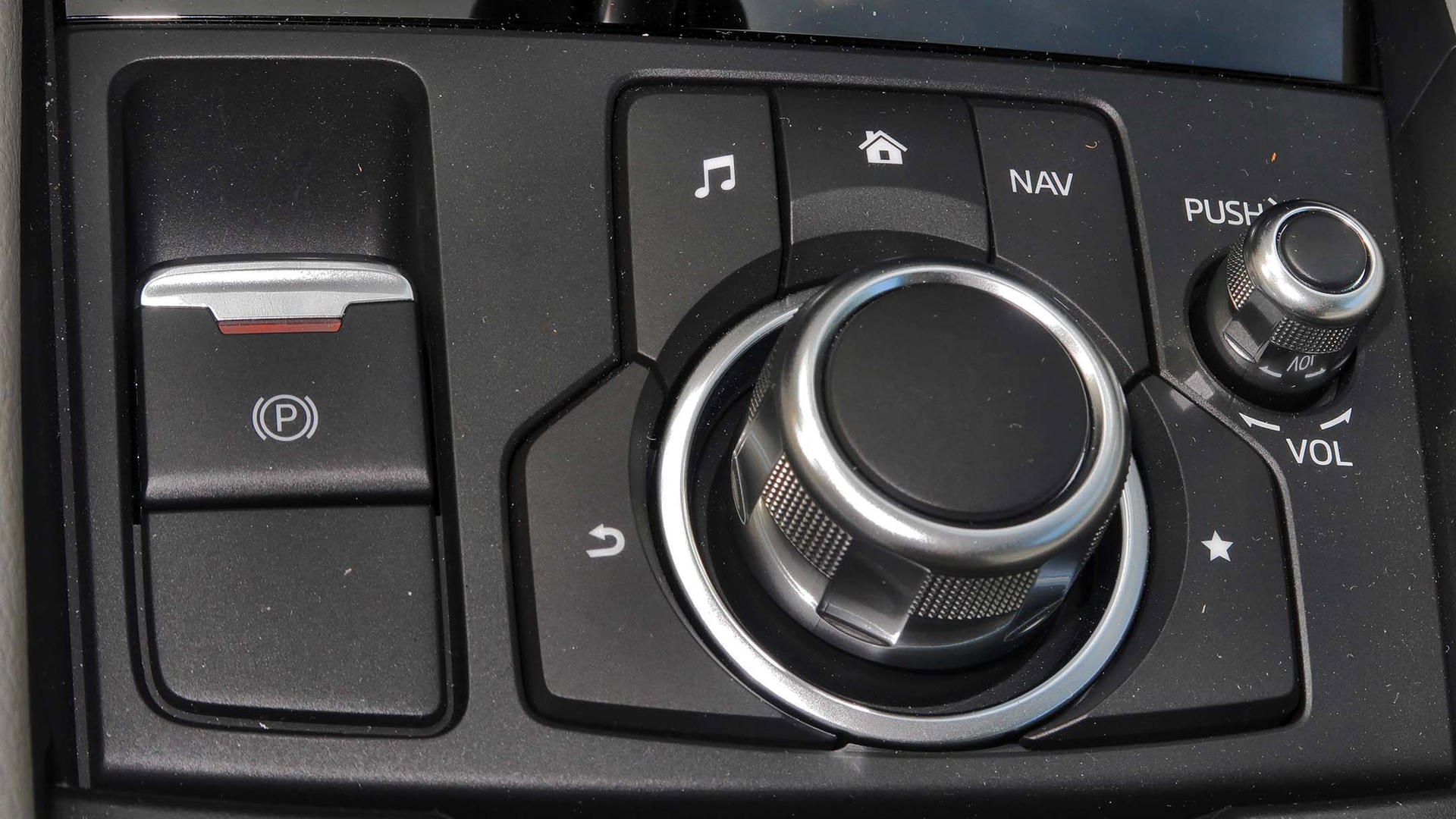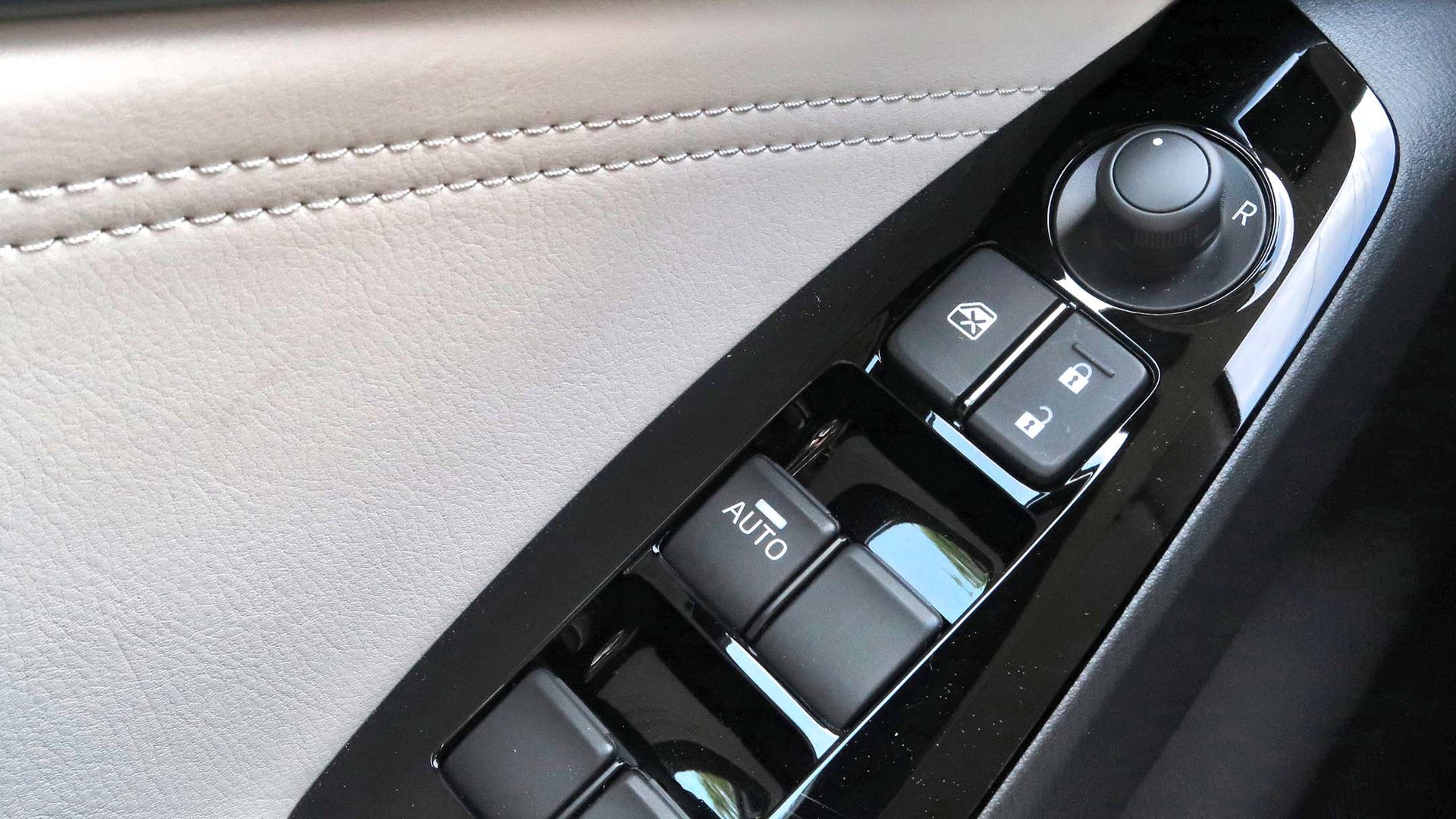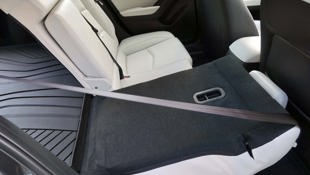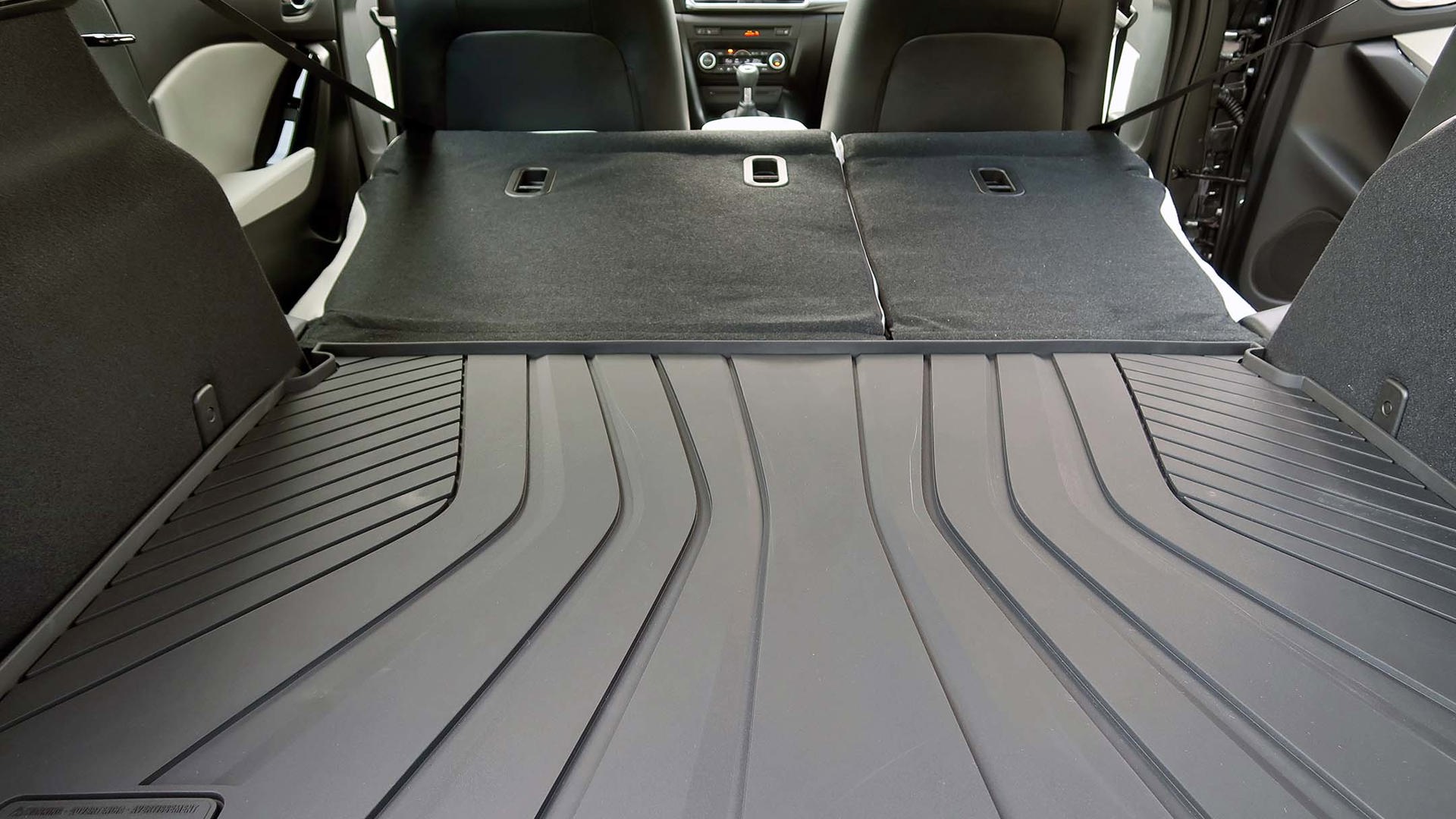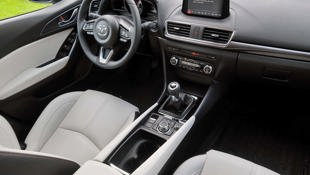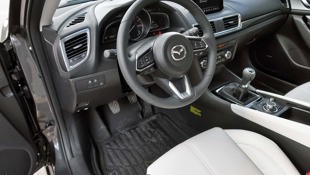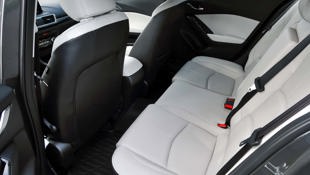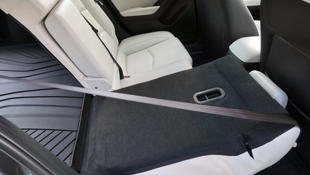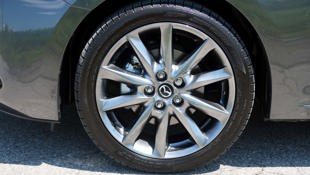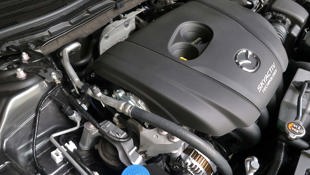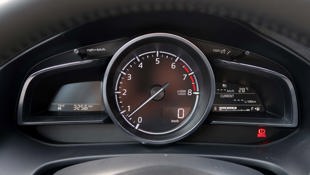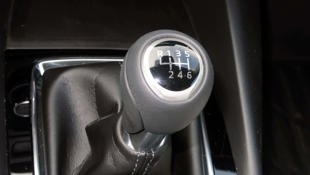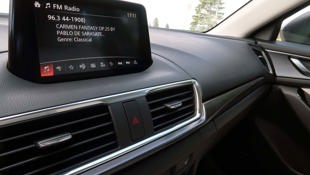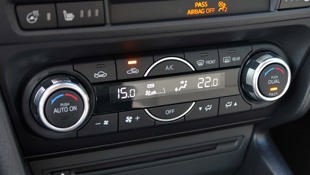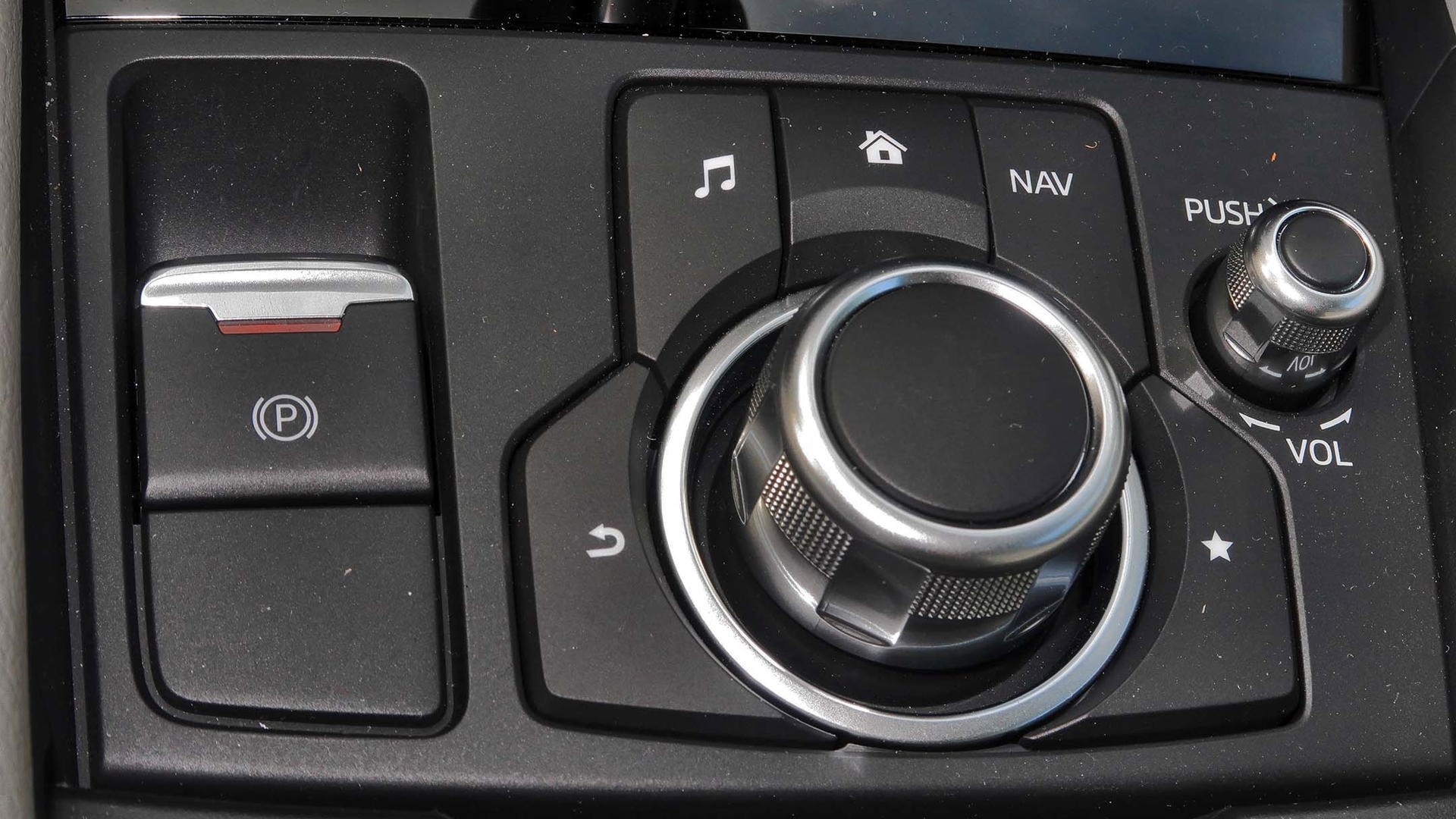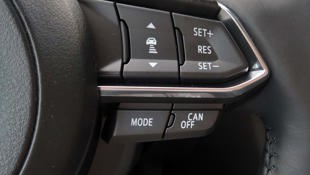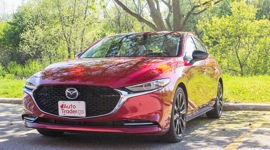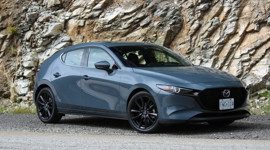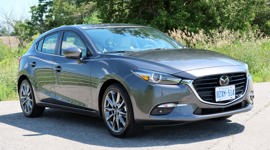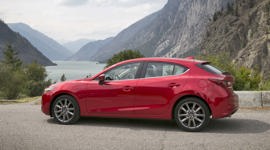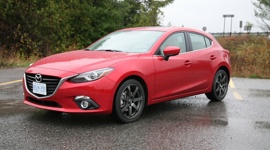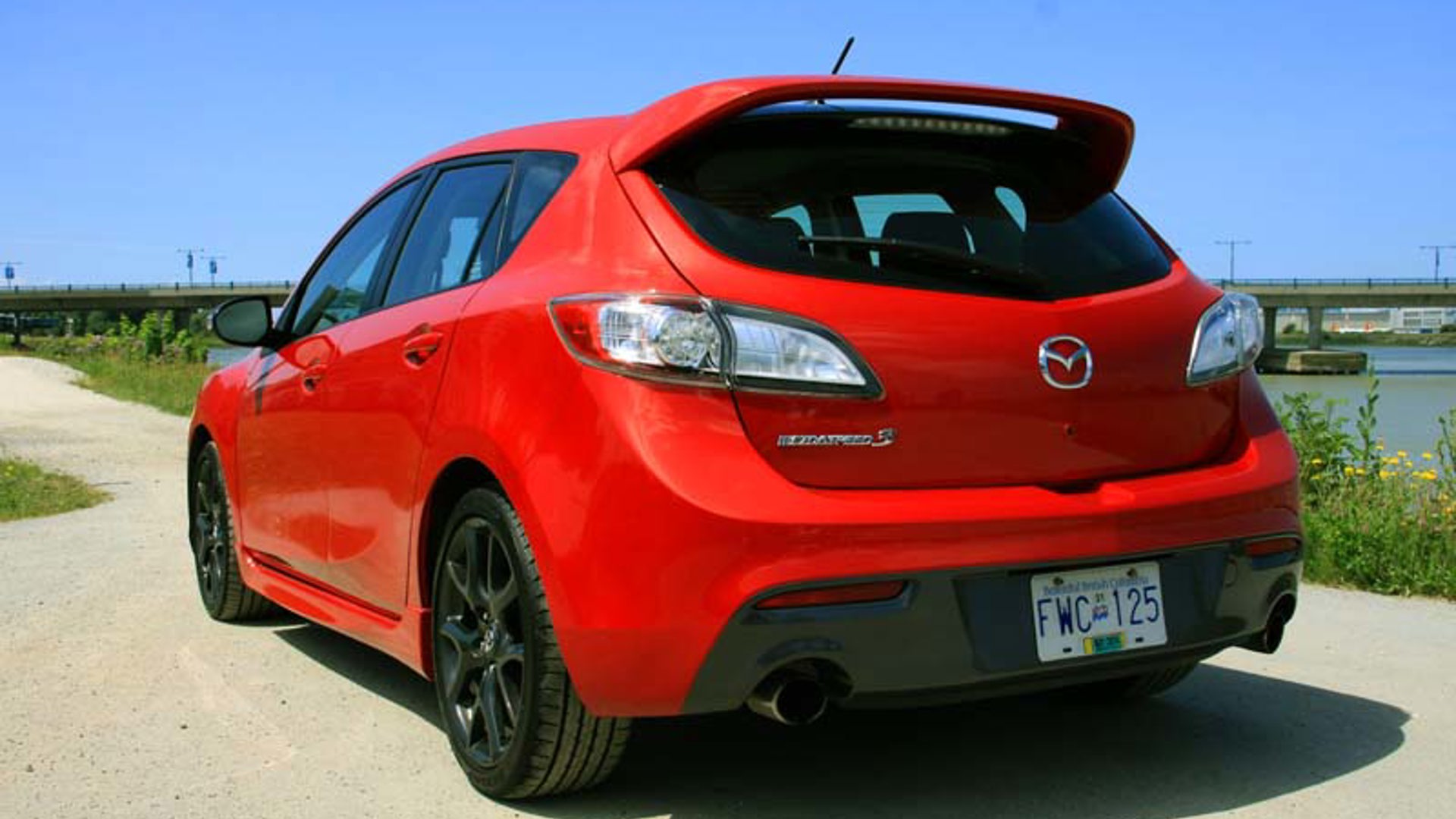 AutoTrader SCORE
AutoTrader SCORE
-
STYLING8/10
-
Safety8/10
-
PRACTICALITY7/10
-
USER-FRIENDLINESS7/10
-
FEATURES8/10
-
POWER9/10
-
COMFORT8/10
-
DRIVING FEEL9/10
-
FUEL ECONOMY8/10
-
VALUE8/10
There are basically two reasons why auto manufacturers still put a stick shift into a vehicle. It can be a slick, well-tuned unit to make it more engaging for enthusiasts, which usually goes on a more expensive model, or it’ll be a slushy, long-throw cheapie so the ads can trumpet the lowest possible price.
While it more than keeps up with everything else, it doesn’t feel all that quick when accelerating off the line. That’s not a bad thing, though: instead, it feels light, smooth, and delightfully balanced.
So it’s unusual when something actually combines price and performance, but Mazda actually pulls it off. When ordered with a manual, the Mazda3 Sport (the name indicates a hatchback) achieves that vital just-shy-of-20-grand starting sticker – $19,800, to be exact. Even so, you get a smooth clutch and a shifter that snicks precisely into each gear, not so short-throw that it’s intimidating to newcomers, but snappy enough to keep the more experienced happily entertained.
And best of all, unlike many of its compact sedan/hatch competitors – the Mazda3 comes with both back ends – the availability of a stick shift doesn’t peter out as you move up the ladder. The six-speed manual comes on all three levels: the base GX, mid-range GS, and my chart-topping tester, the GT, which starts at $25,000.
The six-speed automatic is a $1,300 add-on to the first two trims, but at the GT level, you pay the same for either transmission. The only difference is that while the GT can be optioned with a $2,900 Premium Package, as mine was, the available Technology Package – which adds active air shutters, adaptive front lighting, satellite radio, garage door opener, traffic sign recognition system, and a regenerative braking system (normally found on hybrids, but on this application stores electricity for the lights and other power-feeders) for another $1,350 – can only be added to automatic-equipped models.
Having been refreshed for 2017, the Mazda3 is pretty much unchanged for 2018, except that low-speed forward emergency braking is now available on all trim levels. And once you’ve equipped the mid-level GS with an automatic and a moonroof, you can then top it up with a new option package that adds LED lights, radar cruise control, lane-keep assist, automatic high-beams, high-speed emergency braking and other electronic nannies for another $1,500.
The GX and GS come with a 155 horsepower 2.0L four-cylinder, but the GT replaces it with a 2.5L four-banger that cranks out 184 horses and 185 lb-ft of torque. Even so, while it more than keeps up with everything else, it doesn’t feel all that quick when accelerating off the line. That’s not a bad thing, though: instead, it feels light, smooth, and delightfully balanced. That owes much to Mazda’s SkyActiv, a whole-vehicle fuel-saving approach of lightweight construction with optimized engine and transmission technology. Mazda initially said the internal combustion engine wasn’t going away, and SkyActiv was its alternative to hybridization, although it recently announced a joint factory with Toyota for electric vehicles. The GT’s fuel economy is decent for the 2.5L’s power output, and against official figures of 9.6 L/100 km in the city and 7.0 on the highway, I got 7.3 in combined driving.
That very bearable lightness of being improves its tossability, and the Mazda3 responds quickly to steering wheel input, tucking in tightly and smoothly around corners despite power only going to the front tires.
Part of its steady handling is thanks to G-Vectoring Control, possibly the coolest technology you’ll probably never know is there (it was named Best New Innovation Technology by the Automobile Journalists Association of Canada last year). Introduced on last year’s refreshed model and included with every trim level, G-Vectoring is a software program that ever-so-slightly reduces the engine’s torque when you first turn the steering wheel. It’s almost impossible to detect, but it’s just enough to shift a bit of the car’s weight forward onto the front tires to improve their grip. Curves are smoother, you make fewer steering corrections, and your passengers aren’t jostled around as much.
The interior also carries over unchanged from the 2017 models. I like the overall simplicity of the handsome design, the just-right feel of the steering wheel, and the proliferation of pockets for stashing small items. The tablet-style infotainment screen is a bit jarring, though, sticking up out of the top of the dash like it was glued in place. There’s also an odd little head-up display of sorts, which shows your speed and other information. Most head-ups project the display onto the windshield, but Mazda’s is a less-expensive piece of smoked plastic that rises up just behind the instrument cluster hood, folding flat when the ignition’s off.
Not only does it look cheap, but because it’s ahead of the windshield, you have to keep switching your focus from it to the glass – which kind of defeats the purpose of being able to check your speed without shifting your gaze. It loses further points with me because you have to go through the infotainment system to adjust the display height, which on all HUD-equipped vehicles should be handled with a simple, right-at-your-fingertips hard-button toggle. It also takes a bit to get used to the cluster, since the speed readout is a small display tucked into the large tach.
The infotainment system, upgraded with navigation and a Bose premium stereo with my tester’s Premium Package, can be activated with the touchscreen or through a knob-and-button controller on the console. It can be a bit clunky for some functions, but overall it’s easy to figure out.
That add-on package also swapped out my car’s cloth seats for leather ones, and put a motor under the driver’s seat in place of a manual adjuster. The front chairs are comfortable and with good legroom, but that comes at the expense of the rear passengers, who have far less space in the tight second row. There’s room under the front seats to slip your feet, but when I sat in the back with the front chairs almost all the way back, they were pressing into my knees. Cargo capacity also trails behind much of its hatchback competition, although the 60/40 rear seats fold almost flat for more space.
Like all automakers, Mazda has had to work with changing environmental and fuel standards, customer preferences and safety requirements, but to its credit, the company has never seemed to discard the notion that cars should be efficient and safe, but also fun. Many automakers are downplaying manuals, but for those who like to row their own, Mazda still makes a very good one, and lets you order it in every level of this little hatch. And that’s just the right thing to do.
| Engine Displacement | 2.5L |
|---|---|
| Engine Cylinders | I4 |
| Peak Horsepower | 184 hp @ 5,700 rpm |
| Peak Torque | 185 lb-ft @ 3,250 rpm |
| Fuel Economy | 9.6/7.0/8.3 L/100 km city/hwy/cmb |
| Cargo Space | 572 L/1,334 L rear seats down |
| Model Tested | 2018 Mazda3 Sport GT |
| Base Price | $25,000 |
| A/C Tax | $100 |
| Destination Fee | $1,695 |
| Price as Tested | $29,995 |
|
Optional Equipment
$3,200 – Premium Package (leather upholstery, six-way driver’s seat, manual driver lumbar support, Bose premium audio, CD player, navigation, colour active driving display, proximity key, radar cruise control, smart brake support, front obstruction warning, lane-keep warning and assist, automatic high-beam headlights, auto-dimming mirror, black metallic grille, 18-inch alloy wheels) $2,900; Machine Grey metallic paint $300
|
|
